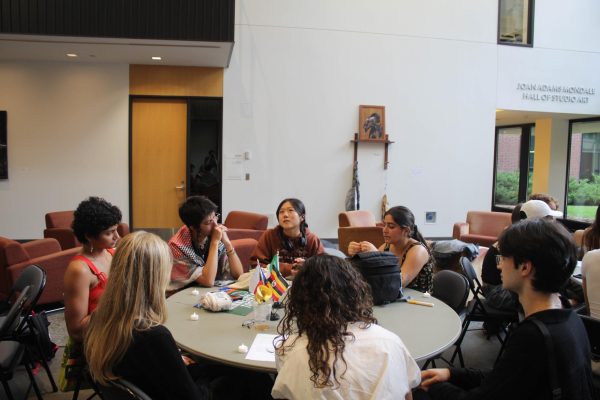Why a liberal arts education?
October 10, 2019
What is the purpose of a liberal arts education?
We must ask ourselves this question frequently, because we tend to focus on only one aspect — a short and simple answer regarding the purpose of the liberal arts education. This simple answer: to immerse ourselves in each of the different core academic divisions — the humanities, natural science and mathematics, fine arts and social sciences. However, because of this short answer, the concept of the liberal arts has seemingly diminished into some requirements on a checklist, but there’s so much more that’s missing when we visualize the liberal arts as only some distribution requirements.
The longer answer: smaller class sizes, working individually with faculty, the opportunity to voice disagreement in small discussions as opposed to large lectures and most importantly — my focus in this piece — the chance to have interdisciplinary academic interests. Here at Macalester, we have the opportunity to deeply consider two totally different academic interests like chemistry and philosophy, or maybe two academic interests that are more entwined like history and religious studies. We’re still able to complete a double major and develop further academic interests in our areas of study, regardless of whether they coincide neatly or are in separate academic divisions. The liberal arts can unite these distinct divisions as well as their individual departments.
Last year, I wrote an article about the limiting nature of the credit maximums, but despite those limitations, I still believe that the liberal arts education can provide extraordinary benefit for us all — we get to study the topics that interest us in whatever direction we choose. If you see a really interesting biology course but you’re an international studies major, it is perfectly fine for you to enroll. Our choices are not limited by what fields we want to study. Credit maximums only cause problems when we want to further invest our time in specific departments or divisions. Are these maximums then really necessary to advance our liberal arts education?
My answer? No. If someone with a double major in two social science departments wants to take more social science courses, whether in their major departments or others, why should this concept of the liberal arts stop them? After all, isn’t the purpose of the liberal arts to allow us students to become better interdisciplinary thinkers? The term interdisciplinary does not mean that we are constantly involved in courses in multiple academic divisions. Rather, being interdisciplinary students means that we relate concepts we learn in one classroom to those we’ve learned in other courses. It shouldn’t matter whether those classrooms fall mostly in the fine arts or mostly in the natural science and mathematics — what matters is that we’re growing as students, as thinkers, as people.
We’re able to fulfill the goals of a liberal arts education without credit maximums in place. Distribution requirements are extremely helpful in that regard because they push us to take courses that we maybe wouldn’t have considered taking before. But interdisciplinary studies do not need to focus across academic divisions. Sometimes the most eye-opening questions are discovered by taking courses in different branches of a division, like two humanities departments.
So I would like to challenge each of us. The next time we hear the question “what is the purpose of a liberal arts education?” — don’t imagine that long checklist of requirements on DegreeWorks. Instead, think about all of those interesting concepts that you’ve related across courses, across departments, across divisions — think about the focus on interdisciplinary studies.













